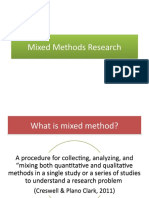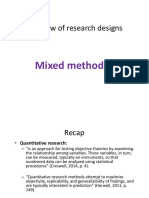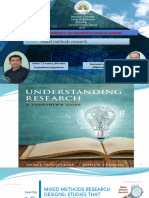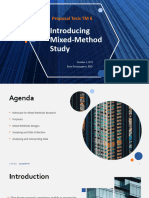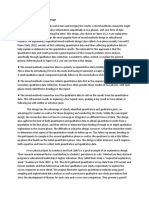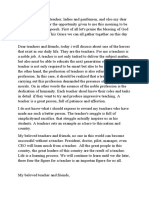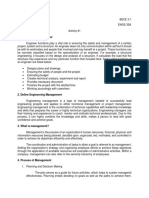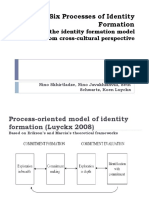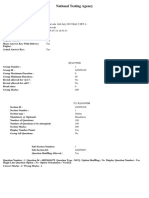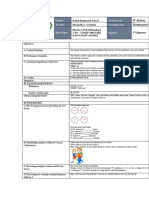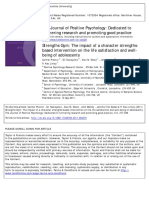0% found this document useful (0 votes)
54 views4 pagesMixed Methods Procedures
Mixed methods research combines quantitative and qualitative approaches to provide a comprehensive understanding of research problems. It is particularly useful for validating results, exploring variables, and clarifying findings from different perspectives. Various designs exist, including convergent parallel, explanatory sequential, and exploratory sequential, each serving specific research needs and contexts.
Uploaded by
nurulputeriutami934Copyright
© © All Rights Reserved
We take content rights seriously. If you suspect this is your content, claim it here.
Available Formats
Download as DOCX, PDF, TXT or read online on Scribd
0% found this document useful (0 votes)
54 views4 pagesMixed Methods Procedures
Mixed methods research combines quantitative and qualitative approaches to provide a comprehensive understanding of research problems. It is particularly useful for validating results, exploring variables, and clarifying findings from different perspectives. Various designs exist, including convergent parallel, explanatory sequential, and exploratory sequential, each serving specific research needs and contexts.
Uploaded by
nurulputeriutami934Copyright
© © All Rights Reserved
We take content rights seriously. If you suspect this is your content, claim it here.
Available Formats
Download as DOCX, PDF, TXT or read online on Scribd
/ 4













